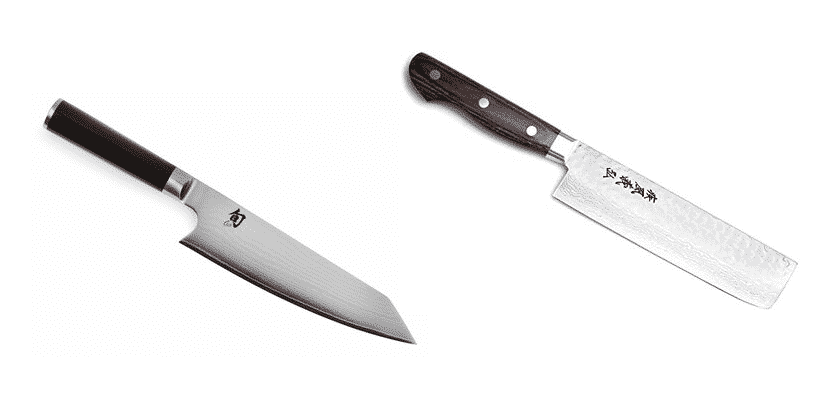
To begin with, Japanese people are incredibly concerned about the knives that they use. This is because they are intricate with the cuts, which is why their knives are famous around the world. For everyone looking for handmade knives, having information on kiritsuke vs. nakiri since both of them are Japanese knives. So, let’s have a look at the details!
Kiritsuke vs Nakiri
Kiritsuke
For the most part, this is the all-purpose knife which is famous for the unique appearance, accrediting the angled tip. There are various sizes of these knives available and it’s safe to say that bigger ones look like short swords. We have already mentioned that these knives are all-purpose but they are great for slicing the cooked meat. However, these knives aren’t regular knives since they are pretty challenging to use. Even in the Japanese culture, only the executive chefs are allowed to use kiritsuke.
These knives are designed with a single bevel edge as well as a double bevel edge. First of all, the single bevel edge promises versatility that helps conduct different cutting tasks. The heel part tends to be flat and chefs often use them as usuba. With this being said, these knives are often associated with status and expertise. These knives have the clip point tip that promises precise cutting. As far as the sizes are concerned, the larger variants range from 270mm to 330m, hence better cutting for long draws.
Secondly, there are double bevel edge kiritsuke that is often known as the combination of Sujihiki and nakiri. These knives are incredibly lightweight. As for performance and functionality, these knives are diverse and promise performance as gyuto. There are different styles of kiritsuke double bevel edge, such as tall and rectangle design and clipped point. With this being said, these knives will lesser curvature promises higher suitability for pull and push cutting.
The chefs often use back slices or pull cuts with the blade tip. These knives are constructed from high-end steel (Japanese, of course) which is sourced from Aichi. As far as the construction is concerned, it takes two months to make one kiritsuke. It also has a carbon content of around 0.95% which enhances the edge retention, along with sharpness and hardness. Also, the slight infusion of chromium will reduce the chances of corrosion.
The knives are treated with heat that enhances the sharpness and keeps the edge sharp. These knives are designed with a hidden tang that increases strength and balance. The knives are integrated with pakkawood handle that promises even weight distribution, hence better cutting. Lastly, the blade is hammered which reduces the chances of food sticking to the blade.
Nakiri
As compared to kiritsuke, nakiri is famous as a vegetable knife. In simpler words, it is used for cutting vegetables. This Japanese knife is highly popular among chefs for promising accurate and precise cuts, such as julienne cuts for veggies. These knives are designed with thick skins, so cutting the huge potatoes will be a cup of tea for you. Nakiri knives are actually designed as usuba knives with a slight western touch.
Nakiri is designed with double bevels which makes it suitable for beginners and home chefs. These knives have a straight edge for the blade that helps cut all the way through vegetables on the cutting board (yes, you don’t need the pulls or push). Generally, the knives are designed with a thin blade as it helps make perfect vegetable cuts and slices. However, it cannot be used for cutting meat or fish; it’s solely for vegetable cutting.
Nakiri is designed with angled edges on both sides, hence easier cutting. In addition, it allows the users to cut the veggies straight. These knives are widely used for slicing and chopping vegetables and are extensively used in Japanese culture. The symmetrical blade of these knives promises easy cutting through the large vegetable pieces. Even more, the vegetables can be evenly sliced. As far as the functionality is concerned, the lightweight design of this knife leads to minimal effort for cutting.
The knife is easiest to clean but you cannot wash it in the dishwasher. You can use the soapy yet warm water for cleaning this knife. Also, once you wash the knife, dry it up as soon as possible because it can rust.